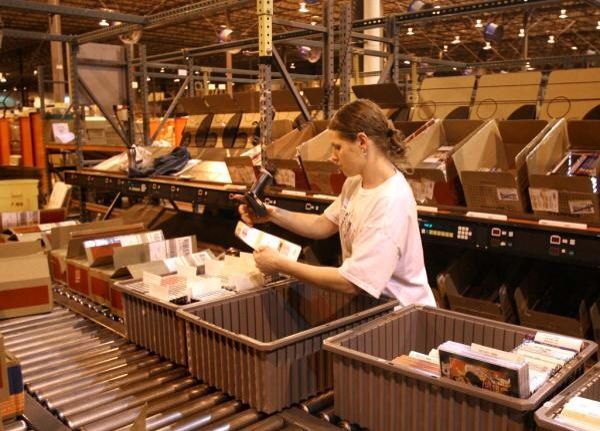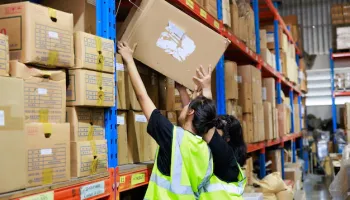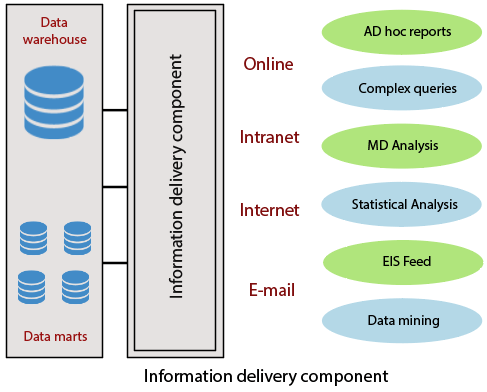Warehouse Packer( 1 years diploma)
Warehouse Packer click here
Brief Job Description
Warehouse Packer in the Logistics industry is also known as Packer, Floor Staff, Warehouse Associate.
Individuals in this role need to pack items that have been picked or require binning. Individuals are
responsible for packing items that require additional pre-packing or outbound packaging. Additional

responsibilities could at times include loading and unloading cargo, labeling, re-packaging items and
documenting cargo that has been moved. The difference in tasks performed under the Packer role thus
varies according to the volume of operations, however the core function of the role is to pack items
according to the nature of the product either for storage or transportation.
Personal Attributes
This job requires the individual to work well with his/her team and achieve joint goals. The individual must
be able to prioritize and execute tasks within scheduled time limits. High attentional to detail is a critical
attribute for this role. The individual should be able to maintain high concentration levels throughout
his/her shift.
Minimum Educational Qualification & Experience
10th Class
OR
8th Class (+ 2 years of ITI)
OR
8th Class (+ 1 year of ITI) with 1 Year of
experience relevant experience
OR
Certificate-NSQF (Loader/ Unloader – level
2) with 1 Year of experience relevant
experience
Minimum Level of Education for Training in
School
Pre-Requisite License or Training Trained in packing techniques
Minimum Job Entry Age 18 Years
Last Reviewed On NA
Next Review Date NA
NSQC Approval Date
Version 3.0
To Carry Out Housekeeping
Description
This unit is about carrying out housekeeping activities
Elements and Performance Criteria
Preparing for housekeeping activities
To be competent, the user/individual on the job must be able to:
PC1. inspect the area while taking into account various surfaces

PC2. identify the material requirements for cleaning the areas inspected, by considering risk,
time, efficiency and type of stain
PC3. ensure that the cleaning equipment is in proper working condition
PC4. select the suitable alternatives for cleaning the areas in case the appropriate equipment and
materials are not available and inform the appropriate person
PC5. plan the sequence for cleaning the area to avoid re-soiling clean areas and surfaces
PC6. inform the affected people about the cleaning activity
PC7. display the appropriate signage for the work being conducted
PC8. ensure that there is adequate ventilation for the work being carried out
PC9. wear the personal protective equipment required for the cleaning method and materials
being used
Carry out Housekeeping
To be competent, the user/individual on the job must be able to:
PC10. use the correct cleaning method for the work area, type of soiling and surface
PC11. carry out cleaning activity without disturbing others
PC12. deal with accidental damage, if any, caused while carrying out the work
PC13. report to the appropriate person any difficulties in carrying out your work
PC14. identify and report to the appropriate person any additional cleaning required that is outside
ones responsibility or skill
Post housekeeping activities
To be competent, the user/individual on the job must be able to:
PC15. ensure that there is no oily substance on the floor to avoid slippage
PC16. ensure that no scrap material is lying around
PC17. maintain and store housekeeping equipment and supplies
PC18. follow workplace procedures to deal with any accidental damage caused during the cleaning
process
PC19. ensure that, on completion of the work, the area is left clean and dry and meets
requirements
PC20. return the equipment, materials and personal protective equipment that were used to the
right places making sure they are clean, safe and securely stored
PC21. dispose the waste garnered from the activity in an appropriate manner
PC22. dispose of used and un-used solutions according to manufacturers instructions, and clean the
equipment thoroughly
Knowledge and Understanding (KU)
The individual on the job needs to know and understand:
KU1. the levels of hygiene required by workplace and why it is important to maintain them during
your work
KU2. how to inspect a work area to decide what cleaning it needs
KU3. methods and materials that used for cleaning variety of surfaces kb4
KU4. the types of cleansing agents that are not to be mixed together
KU5. the correct method for cleaning equipment and/or machinery used during your work
KU6. the importance of personal protective equipment
KU7. appropriate personal protective equipment for the work area,cleaning equipment, tools,
materials and chemicals used
KU8. the correct sequence for cleaning the work area
KU9. the time taken by the treatment to work
KU10. the importance of following manufacturer’s instructions on cleaning agents
KU11. the most appropriate place to carry out test cleans and why this should be done before
applying treatments
KU12. the importance of applying treatments evenly and the effect of not doing this
KU13. process of cleaning the surfaces without causing injury or damage
KU14. the method to check the treated surface and equipment on completion of cleaning
KU15. procedures for reporting any unidentified soiling
KU16. procedures for disposing off waste
KU17. procedures for disposing off or storing personal protective equipment
KU18. escalation procedures for soils or stains that could not be removed
Generic Skills (GS)
User/individual on the job needs to know how to:
GS1. construct simple sentences and express ideas clearly through written communication
GS2. fill up appropriate technical forms, process charts, activity logs in required format of the
company
GS3. write simple letters, mails, etc
GS4. read and understand manuals, health and safety instructions, memos, reports etc
GS5. read images, graphs, diagrams
GS6. understand the various color codes, as per company nomenclature
GS7. express statements, opinions or information clearly so that others can hear and understand
GS8. participate in and understand the main points of simple discussions
GS9. respond appropriately to any queries
GS10. communicate with supervisor
GS11. handle cleaning equipment
GS12. handle cleaning agents
GS13. handle scrap
GS14. handle chemicals and other material
GS15. select the appropriate cleaning compound for different jobs, sections of the shop floor
GS16. suggest improvements(if any) in process based on experience
Prepare For Packing
Description
This OS unit is about preparing for Packing goods
Elements and Performance Criteria
Receive all goods requiring packing from picker/binner
To be competent, the user/individual on the job must be able to:
PC1. receive list of items that require packing from supervisor and determine schedule based on
inbound/outbound timelines
PC2. receive the goods that require pre-packing/ packing from picker or binner
PC3. verify that all the items are listed on the inventory list
PC4. make notes for a report on any variances in quality of load, scheduled time
PC5. handle the items with care to ensure minimal damage to person and good
Check received goods for damages/spills/errors

To be competent, the user/individual on the job must be able to:
PC6. identify any discrepancies such as physical damage, quantity variance, wrong part number,
wrong document, damages etc.
PC7. notify the supervisor of any damaged items that need to be fixed
PC8. notify administration for any additional orders that need to be placed to replace
misplaced/irreparable items
PC9. notify administration or supervisor in case of any other variances and errors
Check packaging requirements for each type of product
To be competent, the user/individual on the job must be able to:
PC10. check packing requirements for each type of product
PC11. ensure packing material required for all products to be packed are available in packing area
PC12. inform supervisor once material is assembled in packing area
PC13. inform supervisor of any additional material required
PC14. clean and prepare any packing boxes or containers before performing packing
PC15. coordinate with picker on timelines for batches of packed goods to be handed over
Safety, Security and Administrative
To be competent, the user/individual on the job must be able to:
PC16. comply with health and safety regulations and procedures in case of fire, chemical hazards,
bio-hazards, etc.
PC17. wear all safety equipment including protective gear, helmets etc.
PC18. follow organization procedures with respect to security, materials handling and accidents
PC19. maintain distance between moving machinery and stay within designated areas
PC20. park or handover pallet trolleys/carts in case of shift breaks to authorized personnel
PC21. adhere to security regulations of the company
Knowledge and Understanding (KU)
The individual on the job needs to know and understand:
KU1. organizational procedures for stock recording
KU2. all safety and health requirements while handling goods
KU3. organization procedure for handling different types of goods such as fragile, heavy, loose
etc.
KU4. roles and responsibilities of different colleagues on the shop floor
KU5. who to reach out to and when to ask for assistance with handling goods
KU6. escalation matrix for reporting identified problems
KU7. how to place goods so they can be easily identified and accessed
KU8. procedures for dealing with loss or damage of goods
KU9. risk and impact of not following defined procedures/work instructions prescribed by the
organization
KU10. implications of poor performance
KU11. importance of identifying possible errors upon unloading
KU12. awareness of the nature and value of items being stored
KU13. types of organizational documentation regarding codes followed, process charts, operating
procedures etc. and importance of the same
KU14. records to be maintained and implications of non-maintenance of the same
KU15. outbound packaging labelling norms and company/product details
KU16. the nature and characteristics of goods being handled
KU17. the various kinds of packing for items according to their type
KU18. different types of packing material and their use
KU19. application of various methods of pre-packing for goods
KU20. how to identify damages to goods and potential fixes
KU21. types of workplace hazards that one can encounter on the job
KU22. usage of tools such as hand trolleys, carts etc.
KU23. company codes/labels for storage bays and goods
KU24. types of labels for storage items/items scheduled for delivery
Generic Skills (GS)
User/individual on the job needs to know how to:
GS1. fill in appropriate forms for inventory received, accidents/damages
GS2. write down observations or notes about items received
GS3. mark items as packed for internal understanding if required
GS4. read inventory/pick list and task schedule and understand the codes as per company
manuals/operating procedure
GS5. read list of items that require packing /marking on pick list
GS6. read and understand safety instructions/labels such as fragile or heavy
GS7. communicate clearly with supervisors, administrative staff and peers
GS8. provide advice and guidance to peers and juniors
GS9. adjust according to volume, capacity and manpower needs during peak and non-peak hours
GS10. prioritize and execute tasks within the scheduled time limits
GS11. flexibility to re-organize work schedules in case of delays/additional work load
GS12. understand the customer timelines and ensure that they are met.
GS13. identify trends/common causes for errors and suggest possible solutions to supervisor
GS14. perform counting in a systematic manner.
GS15. suggest methods to streamline the packing/pre-packing techniques
Perform Packing
Description
This OS unit is about performing Packing of items
Elements and Performance Criteria
Pack all goods that require packing
To be competent, the user/individual on the job must be able to:
PC1. ensure all items that require packing are at the appropriate packing area
PC2. locate the appropriate bays and bins for the packages unloaded
PC3. assist picker/binner with moving goods to packing area
PC4. if required enlist the assistance of a forklift or pallet truck operator for moving goods
PC5. identify any errors occurring prior to the packing process such as damaged/misplaced
goods/wrong labels and report the problems accordingly
PC6. separate goods that require packing and those requiring pre-packing
PC7. apply pre-packing methods specified by the organizational procedure tof rhte type of goods,
size of orders
PC8. apply packing methods specified by the organizational procedure for the type of goods and
size of orders
PC9. provide additional packing for fragile goods with protective materials, such as bubble wrap
and polystyrene chips
Ensure goods are ready for storage/delivery
To be competent, the user/individual on the job must be able to:
PC10. check to ensure container/packing material is damage free
PC11. measure, weigh, and count products and materials.
PC12. examine and inspect containers, materials, and products in order to ensure that packing
specifications are met.
PC13. seal and label each container/package if required
PC14. mark and label containers if required
PC15. seal containers with glue and fasteners.
PC16. tag containers with marking for internal processing, if required by organizational procedure
PC17. remove completed or defective products or materials, placing them on moving equipment
such as conveyors or in specified areas such as loading docks.
PC18. verify all items are labeled and packed appropriately
PC19. stack and pile finished goods into containers.
PC20. move completed packages for loading/binning/storage or hand over to relevant
picker/binner/loader
Safety, Security and Maintenance

To be competent, the user/individual on the job must be able to:
PC21. comply with health and safety regulations and procedures in case of fire, chemical hazards,
bio-hazards, etc.
PC22. wear all safety equipment including protective gear, helmets etc.
PC23. follow organization procedures with respect to security, materials handling and accidents
PC24. maintain distance between moving machinery and stay within designated areas
PC25. maintain a clean, neat and orderly working area
Knowledge and Understanding (KU)
The individual on the job needs to know and understand:
KU1. organizational procedures for stock recording
KU2. all safety and health requirements while handling goods
KU3. organization procedure for handling different types of goods such as fragile, heavy, loose
etc.
KU4. roles and responsibilities of different colleagues on the shop floor
KU5. who to reach out to and when to ask for assistance with handling goo
KU6. escalation matrix for reporting identified problems
KU7. how to place goods so they can be easily identified and accessed
KU8. procedures for dealing with loss or damage of goods
KU9. risk and impact of not following defined procedures/work instructions prescribed by the
organization
KU10. implications of poor performance
KU11. importance of identifying possible errors upon unloading
KU12. awareness of the nature and value of items being stored
KU13. types of organizational documentation regarding codes followed, process charts, operating
procedures etc. and importance of the same
KU14. records to be maintained and implications of non-maintenance of the same
KU15. outbound packaging labelling norms and company/product details
KU16. the nature and characteristics of goods being handled
KU17. the various kinds of packing for items according to their type
KU18. different types of packing material and their use
KU19. application of various methods of pre-packing for goods
KU20. how to identify damages to goods and potential fixes
KU21. types of workplace hazards that one can encounter on the job
KU22. usage of tools such as hand trolleys, carts etc.
KU23. company codes/labels for storage bays and goods
KU24. types of labels for storage items/items scheduled for delivery
Generic Skills (GS)
User/individual on the job needs to know how to:
GS1. fill in appropriate forms and documents
GS2. write/re-write labels in case required
GS3. read labels and understand the codes as per company procedures
GS4. read and understand handling instructions/labels such as fragile or heavy
GS5. read and understand companys safety and operating signs on the shop floor
GS6. communicate clearly with supervisors and peers
GS7. provide advice and guidance to peers and juniors

GS8. adjust according to volume, capacity and manpower needs during peak and non-peak hours
GS9. prioritize and execute tasks within the scheduled time limits
GS10. flexibility to re-organize work schedules in case of delays/additional work load
GS11. understand the customer timelines and ensure that they are met.
GS12. identify trends/common causes for errors and suggest possible solutions to supervisor
GS13. perform counting in a systematic manner.
GS14. suggest methods to streamline the packing/pre-packing techniques
GS15. ability to concentrate on the task at hand and complete it without errors
GS16. pay attention to detail
Perform Post Packing Activities
Description
This OS unit is about performing post packing activities such as documenting undelivered items
Elements and Performance Criteria
Reporting of data/problem/incide nts etc.
To be competent, the user/individual on the job must be able to:
PC1. review packing lists to ensure all activities have been complemeted
PC2. report the status of inventory that has been damaged/misplaced
PC3. report the status of inventory that has been successfully packed and stored
PC4. report the status of goods that has been successfully packed and transported
Documentation and administrative duties
To be competent, the user/individual on the job must be able to:
PC5. assist supervisor with generation of packing slip if required
PC6. inform the supervisor of any difficulties due to task loads or time limits
PC7. fill out administrative forms and complete all organizational formalities for
damages/accidents that occurred post-packing
PC8. maintain database of packages
PC9. fill in orders for new materials required with supervisors assistance
Safety, Security and Maintenance
To be competent, the user/individual on the job must be able to:
PC10. comply with health and safety regulations and procedures in case of fire, chemical hazards,
bio-hazards, etc.
PC11. wear all safety equipment including protective gear, helmets, gloves etc.
PC12. follow organization procedures with respect to security, materials handling and accidents
PC13. maintain distance between moving machinery and stay within designated areas
PC14. adhere to security regulations of the company
Knowledge and Understanding (KU)
The individual on the job needs to know and understand:
KU1. organizational procedures for stock recording and packing
KU2. different methods of recording information
KU3. various documents that need to be maintained
KU4. company procedure for filling/maintaining up the documents
KU5. procedures for reporting to the appropriate authority
KU6. procedures for recording damage, breakages etc.
KU7. reporting incidents where standard operating procedures are not followed
KU8. the importance of complete and accurate documentation
KU9. roles and responsibilities of different colleagues on the shop floor
KU10. risk and impact of not following defined procedures/work instructions
KU11. escalation matrix for reporting identified problems
KU12. types of organizational documentation regarding codes followed, process charts, operating
procedures etc. and importance of the same
Generic Skills (GS)
User/individual on the job needs to know how to:
GS1. fill in appropriate forms for any accidents/damages
GS2. fill appropriate documents for reporting and log in details of inventory
GS3. write up notes/reminders

GS4. read fluently (in english/ vernacular) with few pauses and a constant speed
GS5. read and understand manuals, health and safety instructions, memos, reports etc.
GS6. ability to read from different material sources books, screens in machines etc.
GS7. understand the various color codes, as per company nomenclature
GS8. communicate clearly with supervisors and peers
GS9. provide advice and guidance to peers and juniors
GS10. adjust according to volume, capacity and manpower needs during peak and non-peak hours
GS11. prioritize and execute tasks within the scheduled time limits
GS12. flexibility to re-organize work schedules in case of delays/additional work load
GS13. understand the customer timelines and ensure that they are met.
GS14. identify trends/common causes for errors and suggest possible solutions to supervisor
GS15. perform counting in a systematic manner.
GS16. suggest methods to streamline the packing/pre-packing techniques
GS17. ability to concentrate on the task at hand and complete it without errors
GS18. pay attention to detail
Employability Skills (30 Hours)
Description
This unit is about employability skills, Constitutional values, becoming a professional in the 21st Century,
digital, financial, and legal literacy, diversity and Inclusion, English and communication skills, customer
service, entrepreneurship, and apprenticeship, getting ready for jobs and career development.
Scope
The scope covers the following :
Introduction to Employability Skills
Constitutional values – Citizenship
Becoming a Professional in the 21st Century
Basic English Skills
Communication Skills
Diversity & Inclusion
Financial and Legal Literacy
Essential Digital Skills
Entrepreneurship
Customer Service
Getting ready for Apprenticeship & Jobs
Elements and Performance Criteria
Introduction to Employability Skills
To be competent, the user/individual on the job must be able to:
PC1. understand the significance of employability skills in meeting the job requirements
Constitutional values – Citizenship
To be competent, the user/individual on the job must be able to:
PC2. identify constitutional values, civic rights, duties, personal values and ethics and
environmentally sustainable practices
Becoming a Professional in the 21st Century
To be competent, the user/individual on the job must be able to:
PC3. explain 21st Century Skills such as Self-Awareness, Behavior Skills, Positive attitude, selfmotivation, problem-solving, creative thinking, time management, social and cultural
awareness, emotional awareness, continuous learning mindset etc.

Basic English Skills
To be competent, the user/individual on the job must be able to:
PC4. speak with others using some basic English phrases or sentences
Communication Skills
To be competent, the user/individual on the job must be able to:
PC5. follow good manners while communicating with others
PC6. work with others in a team
Diversity & Inclusion
To be competent, the user/individual on the job must be able to:
PC7. communicate and behave appropriately with all genders and PwD
PC8. report any issues related to sexual harassment
Financial and Legal Literacy
To be competent, the user/individual on the job must be able to:
PC9. use various financial products and services safely and securely
PC10. calculate income, expenses, savings etc.
PC11. approach the concerned authorities for any exploitation as per legal rights and laws
Essential Digital Skills
To be competent, the user/individual on the job must be able to:
PC12. operate digital devices and use its features and applications securely and safely
PC13. use internet and social media platforms securely and safely
Entrepreneurship
To be competent, the user/individual on the job must be able to:
PC14. identify and assess opportunities for potential business
PC15. identify sources for arranging money and associated financial and legal challenges

Customer Service
To be competent, the user/individual on the job must be able to:
PC16. identify different types of customers
PC17. identify customer needs and address them appropriately
PC18. follow appropriate hygiene and grooming standards
Getting ready for apprenticeship & Jobs
To be competent, the user/individual on the job must be able to:
PC19. create a basic biodata
PC20. search for suitable jobs and apply
PC21. identify and register apprenticeship opportunities as per requirement
Knowledge and Understanding (KU)
The individual on the job needs to know and understand:
KU1. need for employability skills
KU2. various constitutional and personal values
KU3. different environmentally sustainable practices and their importance
KU4. Twenty first (21st) century skills and their importance
KU5. how to use basic spoken English language
KU6. Do and don’t of effective communication
KU7. inclusivity and its importance
KU8. different types of disabilities and appropriate communication and behaviour towards PwD
KU9. different types of financial products and services
KU10. how to compute income and expenses
KU11. importance of maintaining safety and security in financial transactions
KU12. different legal rights and laws
KU13. how to operate digital devices and applications safely and securely
KU14. ways to identify business opportunities
KU15. types of customers and their needs

KU16. how to apply for a job and prepare for an interview
KU17. apprenticeship scheme and the process of registering on apprenticeship portal
Generic Skills (GS)
User/individual on the job needs to know how to:
GS1. communicate effectively using appropriate language
GS2. behave politely and appropriately with all
GS3. perform basic calculations
GS4. solve problems effectively
GS5. be careful and attentive at work
GS6. use time effectively
GS7. maintain hygiene and sanitisation to avoid infection







